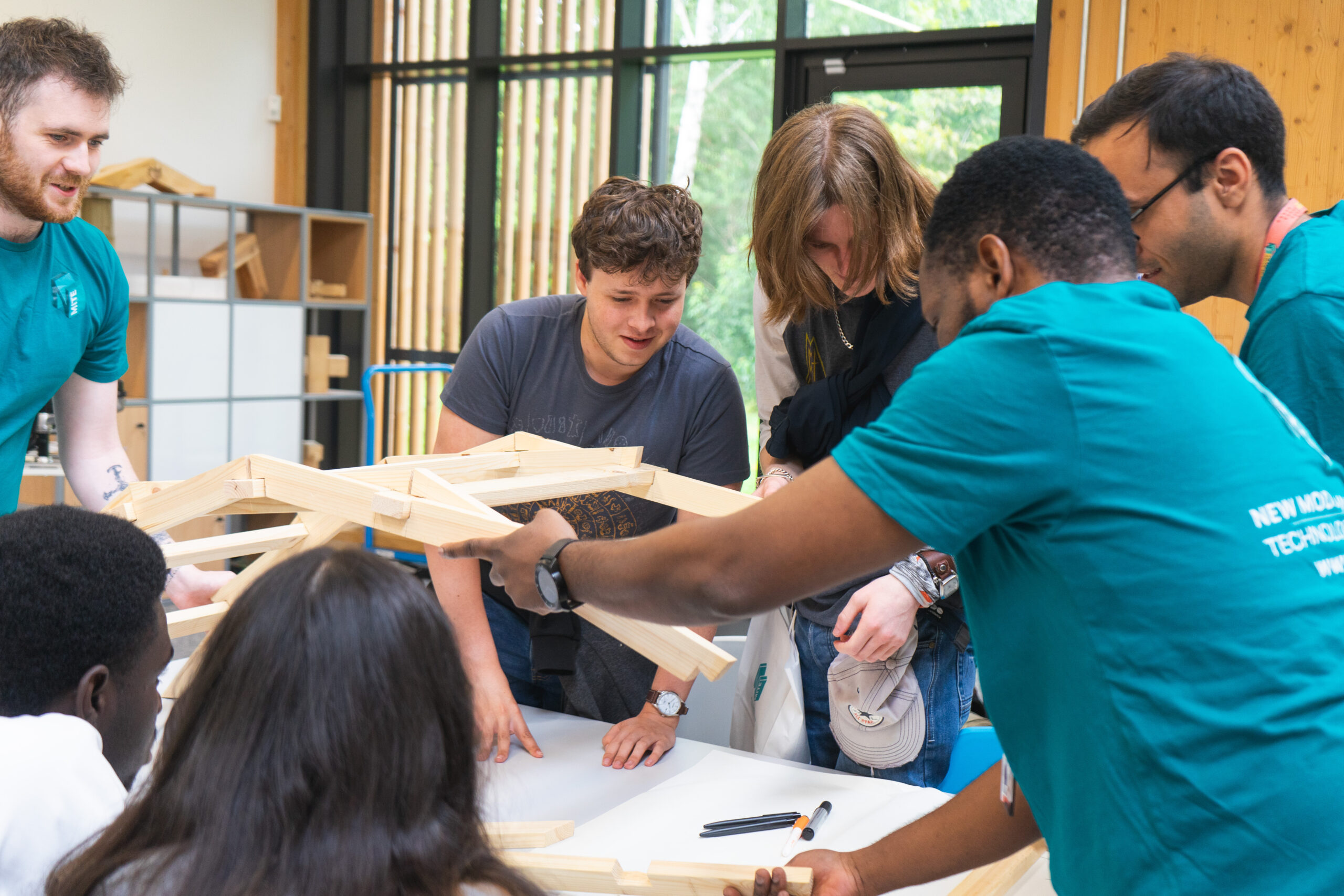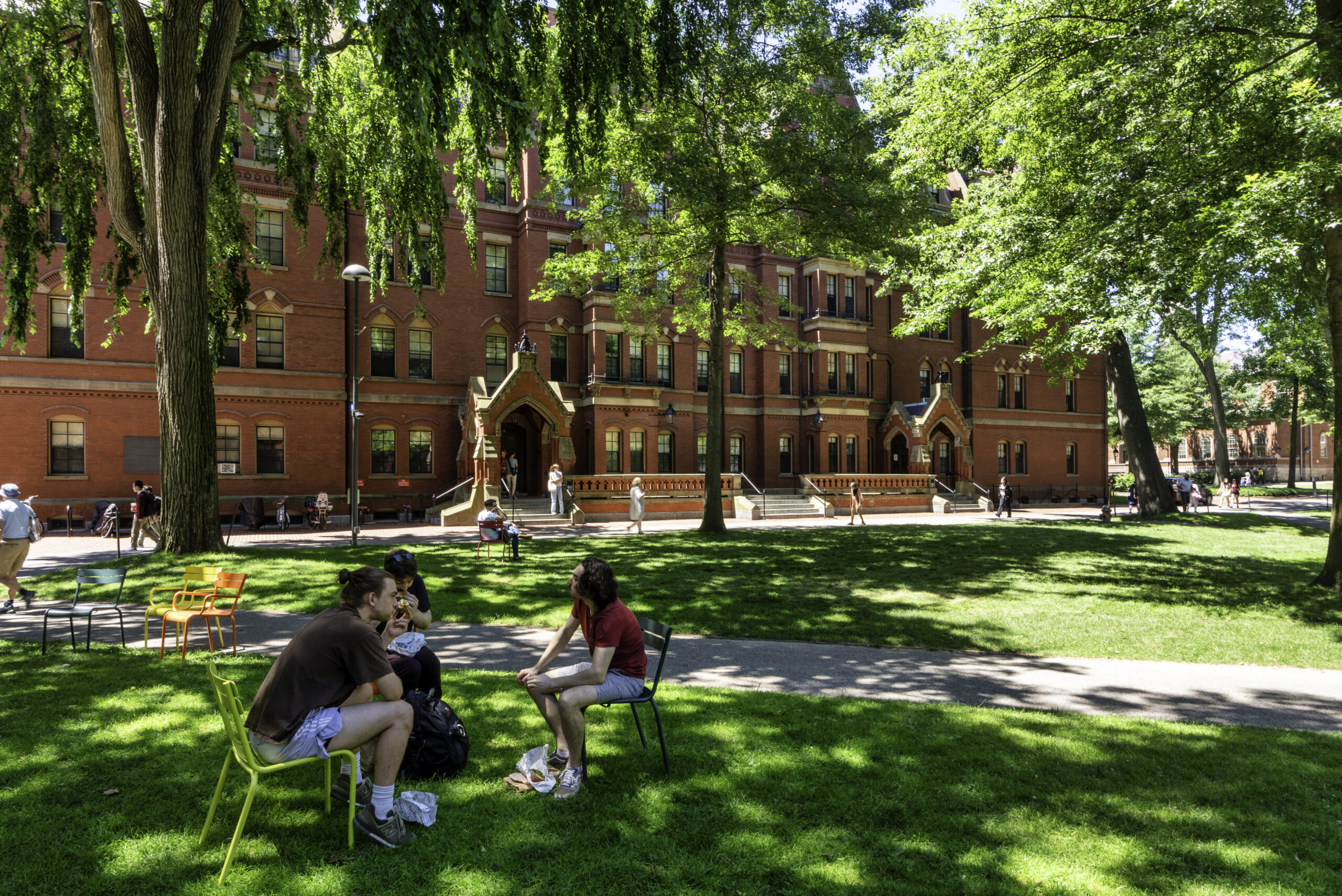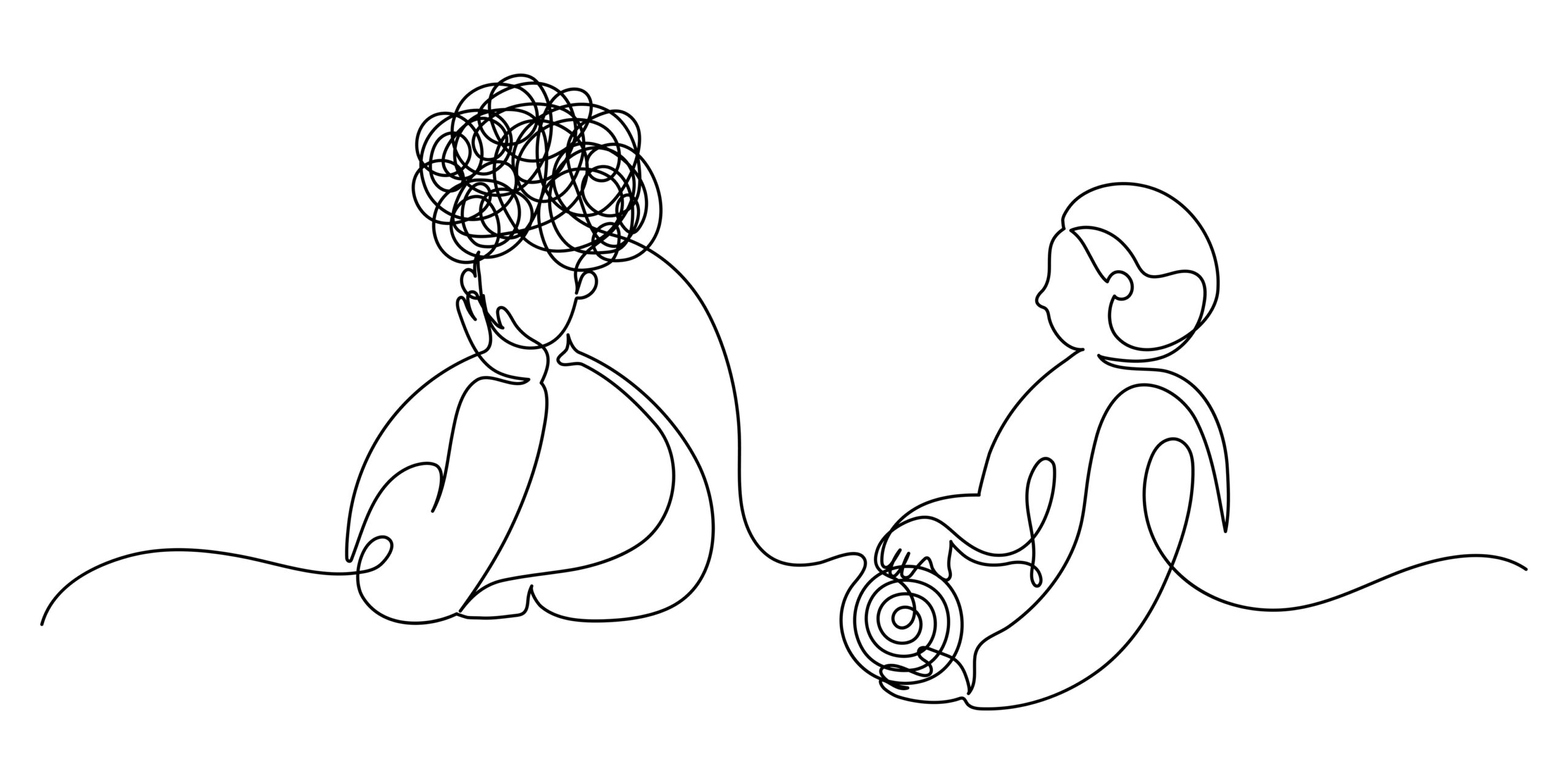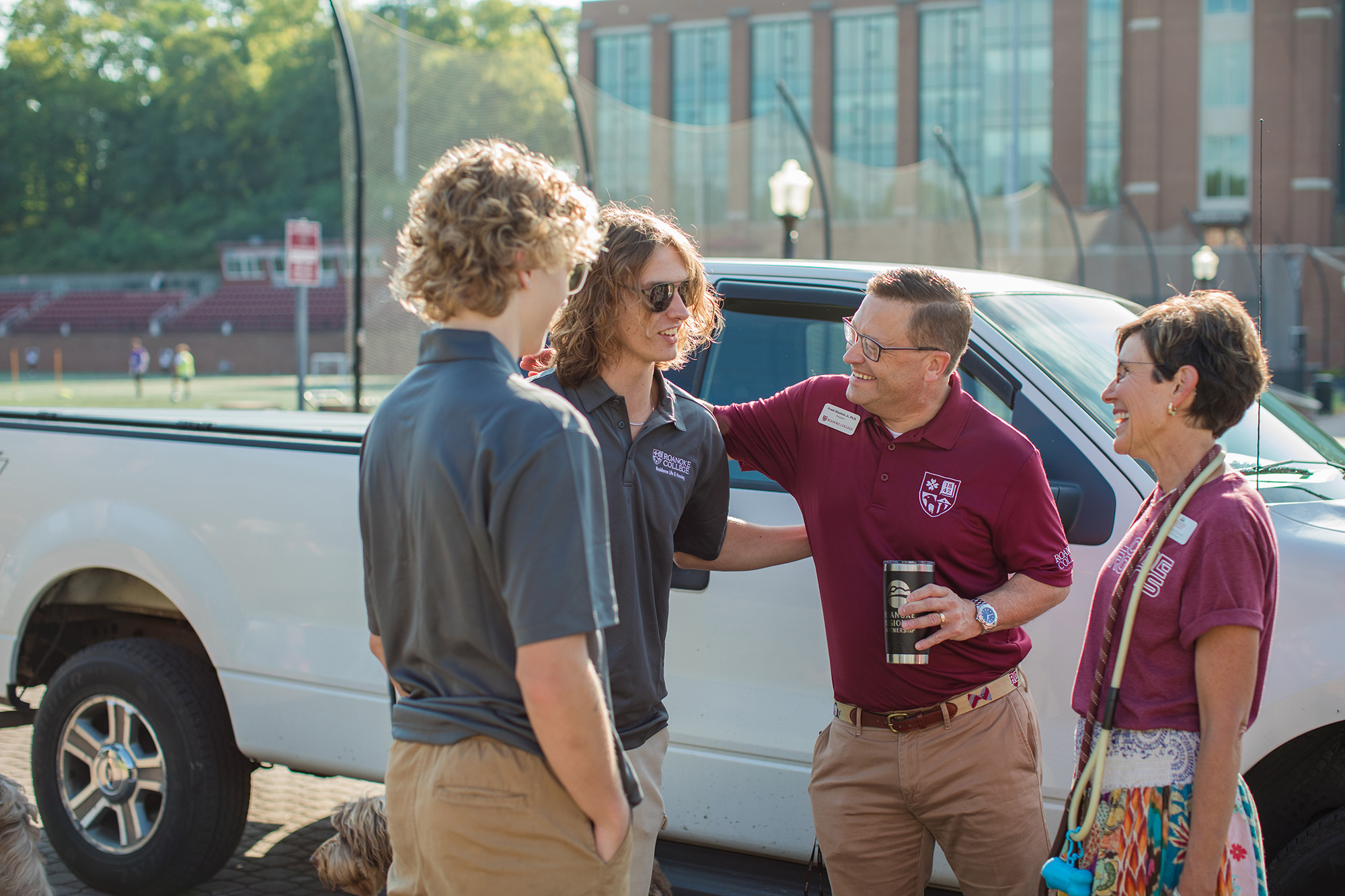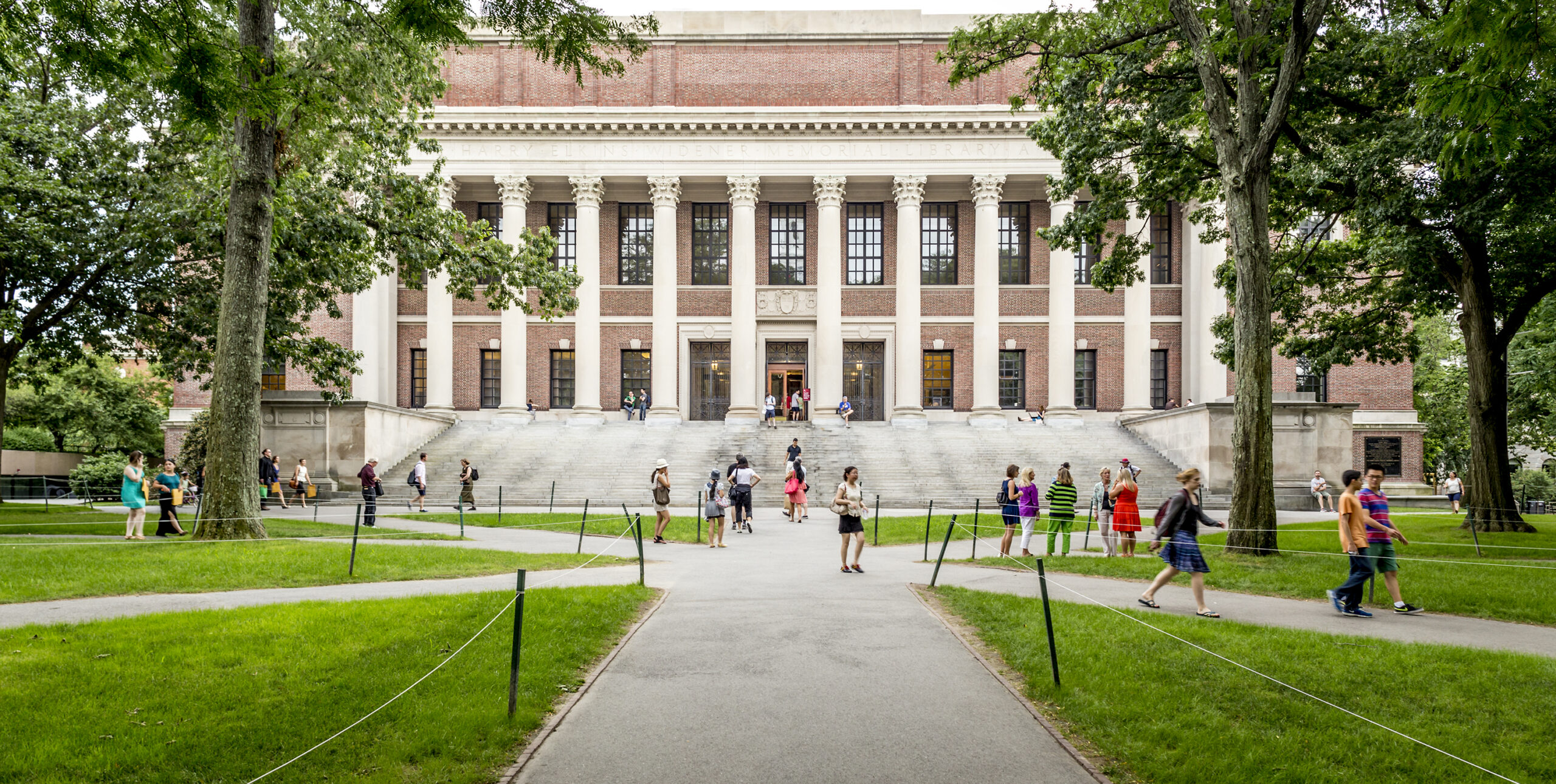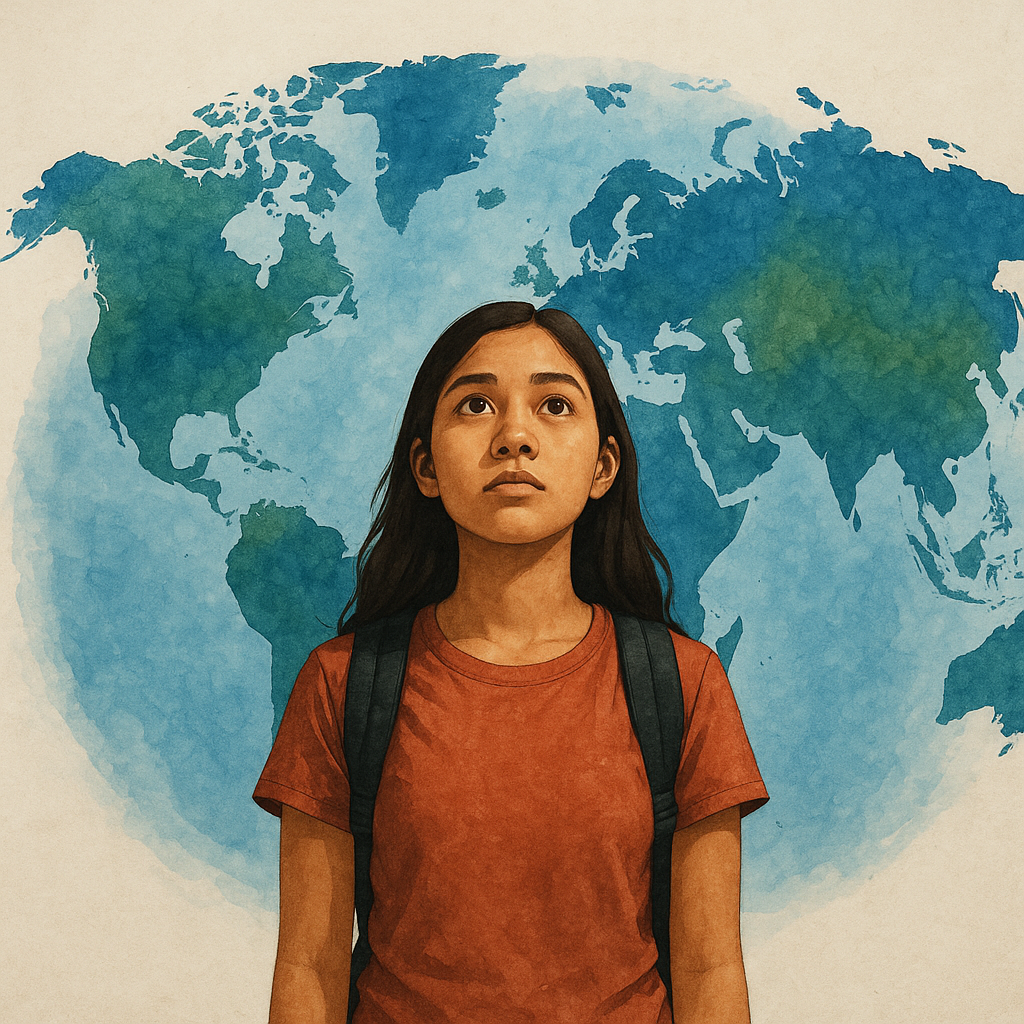The New Model Institute for Technology and Engineering (NMITE) in western England offers an unorthodox approach to university life and learning by any standard. In the United Kingdom, where tradition reigns in higher education and has for several hundred years, NMITE President and Chief Executive James Newby says the fresh concept behind his college is especially radical.
Around 2021, when NMITE welcomed its first class of students, Newby joined the team of what he calls “closet revolutionaries,” dedicated to forming a new generation of engineers uniquely prepared for career. The approach centers highly practical, collaborative assignments that mimic dynamics in the workplace. The intimate, immersive, and accelerated pathway attracts a wide range of students, all hungry to get the most out of their education — and their money.
With LearningWell, Newby discusses the big idea behind NMITE and the many small deviations from the standard that bring it to life. He’s leading with the “politeness” to navigate British education from the inside and the boldness to envision how one institution could launch a movement.
LW: Tell us a bit about the concept behind your work and its history. Why is this new approach important right now?
JN: NMITE is a very rare thing in the U.K. higher education system — a new university starting entirely from scratch. It’s very unusual in the U.K. for new universities to happen at all, but to happen without evolving from some precursor institution is incredibly rare.
There are really two key strands to our mission. The first is that the U.K. engineering employers have, for about 20 or 30 years, been complaining that the graduates they get from the traditional higher education sector just aren’t what they need — don’t have the right skills. They’re not ready to work. It takes too much time, too much money, and too much effort to convert them into really good, valuable employees. So we wanted to create a university that would just prepare a different type of engineering graduate, and our key focus was to make those graduates work-ready. It’s not just about producing brains on a stick or graduates who are good at winning pub quizzes. They need to be able to work and interact and understand what they’re doing.
The second key strand of the mission was to put a university in a part of the country in the U.K. where there hasn’t been one before and, therefore, where very few young people went to university. When I explain this to Americans, they’re always very surprised because we always look like such a small country from the American vantage point. But there’s such significant regional variation in the U.K. that we feel like a number of very different countries all crammed onto this very small island. So the part of the U.K. that we’re in near Wales is very sparsely populated, and, actually, very few young people who grow up in this part of the U.K. will ever go to university and enjoy all the life benefits that come from having that level of education. There’s just a lack of ambition regionally. There’s a lack of pathways that are really clear and easy to access for young people here. So we wanted to create a new type of engineer and really warm up this higher education cold spot in the U.K.
Those are the two things we were set up to do. It’s fair to say it took a long, long time to get us off the ground. We knew we didn’t want to create something that would just add more capacity to an already quite crowded higher education sector. It had to be different. We had to be quite disruptive — in as positive a way as we can — to a sector in the U.K. that had really not undergone any kind of major reform, any structural reform for generations. Most young people in the U.K. who go off to university to do a degree do it in the same institutions in the same kind of way that they’ve always done it. Every other sector of our economy has been completely reformed in the last 30 or 40 years through market disruption or political prioritization. But higher education has largely grumbled on in the same way.
LW: Was the prospect of leading that sort of rare change in U.K. higher education what personally compelled you to get involved with NMITE? What stage in your career were you at when you joined the team?
JN: I had been working in a big, traditional university — the sort I’ve been describing in disparaging terms. So I was probably part of the problem. But I was approached and asked whether I might be interested in this really mad idea of building a new university. It was one of those questions where you think, If I say no now and then just go and do another job similar to what I’ve been doing for the last few years and just plop on through to retirement in that way, then I’ll just regret for the rest of my time that I never did this. So I took the plunge and did it. I’ve never regretted it.
We tend to attract staff who are sort of “closet revolutionaries.” They’re really frustrated by the system they feel stuck in, and they really want to do something exciting and different. Even if it might fail, you just want to do it. Or we recruit people who just don’t come from the same traditional background. A lot of our team are early career academics, so they’re in their late twenties, perhaps postdoctoral students. They’re not embedded in academic traditions. They’re good at innovation.
I lived near London when I joined. I was in the part of the U.K. where all the economic activity and the main jobs are, and all the innovation is. So I did have to grapple with moving my family to this rural corner of the country to do this. That was not an easy decision, frankly. I remember it because it’s the decision we ask a lot of our students to take when they come from London or Birmingham or Manchester. It gives you empathy, if you just remember how you felt. So I did it, and I can tell them it is the best thing I ever did, and they should give it a try. And when you’re 18, you should do things like that. You should take a few risks.
LW: So despite being positioned to bring in a new type of student in its rural area, NMITE also serves students from far and wide?
JN: It’s both. The U.K. system actually isn’t as regionally rooted as the American system. Most of our institutions have a national outlook and a national focus, whatever the location of their campus. Some of the smaller ones, just by virtue of their geography, do tend to recruit more local students. And there’s a trend towards attending your local university slightly more than there used to be, but that’s because it’s so much less expensive to do that than to have to pay for accommodation at some distant institution. And that’s another reason why well-off kids can make all the choices that they want to make and less well-off kids simply don’t have the same choices. That’s something else we’ve always been conscious of. We want to drive social mobility and give opportunities — the same kind of opportunities for the same kind of quality — to kids who generally can’t move around the country just because of economic constraints. Our split between local students and those recruited nationally is about 40-60 in favor of national students, but 40 percent is a significant minority in the U.K.
LW: Got it. Can you elaborate on some of the other specific ways you’re flipping the script on educational tradition in the U.K.?
JN: Well, the model is distinctive in the following ways: We adopt block learning. Our students learn one topic at a time in the form of an immersive learning experience in a single module. That’s unusual in the U.K. Generally, degrees are built from various modules of building blocks, but you’ll learn them in a timetable that moves you around the campus from one topic to another in any given week. It’s a very inefficient way of learning. I often draw the comparison to learning to play the piano. You learn much quicker if you spend three weeks doing it in a completely immersive way with a full-time tutor teaching you the whole time than if you’ve split the same number of learning hours across a year and do it once a week for one hour along with everything else. That immersive form of learning significantly accelerates learning gain for students. They learn and become technically proficient much more quickly.
The other thing that’s distinctive is we accelerate the program, so we compress the learning into a shorter time period. Whereas it takes three years to do an undergraduate degree in a normal U.K. university, it only takes two years at NMITE. The reason for that is we make our students work nine to five Monday to Friday in this immersive way. That’s a much more efficient use of time. It reflects much more accurately the rhythms and patterns of a job — the workplace. It’s really good for developing a work ethic. We work very hard to make sure our students are on task for much more of the time. That means they’re working on something purposeful.
When we say that, it sounds very earnest. But we try to inject quite a lot of fun. We definitely don’t disapprove of fun. But what we really want them to be doing is meaningful, on-task work. That’s because our observation of traditional universities is students just spend an awful lot of time rattling around between lectures, not engaged in anything purposeful. And when you are paying by the year, that’s just not getting you the payback for the money you are spending. It’s just not good value for the student or the taxpayer or the university.
Our students are always working on challenge-based learning. Instead of putting them in lecture theaters and transmitting theory to them via PowerPoint presentation or a lecture, they’re working in a hands-on way. There may be a series of quite short, sharp seminars to transmit technical information, but most of the time, they’re working on something that delivers an output that reflects what happens in a workplace. They might be building a prototype or a series of codes or a circuit board. We don’t test them by traditional exams.
We’ve developed a whole pedagogical approach whereby students only succeed if the team succeeds, and they have to work in teams. We’ve designed it so you can’t possibly do the course — it’s too much — to do on your own. You could only succeed if you work as a team — divide the work up. And it’s just the social skills that develop, the extra support that inevitably provides — the nurturing that gives to people who are more neurodiverse and who struggle with self-directed learning common in traditional universities. That scaffolding is just provided in a much more real-world kind of setting. We find that’s hugely effective.
So those are the main elements of the model that are different from a traditional degree. One of the things we’re quite obsessive about is the accusation we might not be academically rigorous — that this is just too vocational in its style. We obsess about academic quality. We are absolutely determined that the students we produce will have the same level of technical knowledge and proficiency as a student from a top university. But what will be different is they’ll have much more practical capability and much more emotional intelligence.
LW: And when you heard from employers unsatisfied with newest engineers, were those the main things — work ethic, work experience — companies said young people were lacking? Are there other areas this model is directly responding to?
JN: We wanted our students to be really ethically conscious. We do that by teaching them quite a lot of liberal studies. They have to know how to do some engineering, but they have to know why they should do it — or why they should not do it.
Just being able to do something doesn’t mean it’s the right thing for you to do. We want them to understand the sociological impacts, the climate impacts — the ethical things you have to grapple with. We do a lot of work with the defense and security industry in the U.K., and that creates lots of really fascinating engineering challenges, but it creates quite a few ethical things to think about, as well. If you are building a drone, you might be building it for humanitarian purposes to deliver aid to disaster areas, but it could quite easily be repurposed to deliver munitions in a war zone. We can’t make the world simpler than it is, and we can’t make those problems go away, but we can equip students with the emotional intelligence to cope with the debate that happens around them, so they can choose where they want to apply their skills and who they want to work for.
LW: And I imagine that ethical training serves the more academic focus you were talking about, in contrast to those detractors who may say this school is totally devoted to professional development.
JN: Yeah, I’m not entirely sure how it is in the American system, but in the U.K., we have this rather tedious binary debate about vocational versus academic training. I mean, it sort of goes without saying you need both to really survive in this world and to thrive in this world. You have to be good at the practical teamworking elements, but you have to have good theoretical knowledge, as well. We want to create students who can think and do — not one or the other. We try not to overcompensate on the risk that we are viewed as too vocational and not academic enough. But on the other hand, we try not to say we’re one or the other or that one is more important than the other. The whole point is you can only succeed if you’ve led them both and produce people with genuine intellectual intelligence but practical and emotional intelligence, too.
LW: How does NMITE differ from other schools in terms of its criteria related to math and science?
JN: That was a really important thing when we started. So to do an undergraduate engineering degree in the U.K., it’s nearly always a prerequisite that you have a maths or physics A-level. An A-level is an advanced level of pre-university study, and to get a maths A-level is quite hard. It’s one of the hardest pre-university subjects you could do. Physics is hard, as well. And because they’re difficult, fewer kids do them than really should. But what we found when we were developing the NMITE courses was that most of what you need for that maths A-level doesn’t actually present until much later on — year two or year three. So we asked ourselves the question: Why do we exclude people from engineering because they don’t have that maths A-level, when they actually don’t need the content in the maths A-level until at least a year into the course? That would give us plenty of time to get them up to speed — recover their maths learning — and it would stop us having to exclude them from becoming an engineer. But if we did that, we would open up the profession of engineering to this fantastically new pool of people who are currently excluded.
Would you believe that includes an awful lot of women because women don’t do engineering in the U.K. in anything like the numbers they do in other countries? About 15 percent of engineers in the U.K. are female. So there’s a massive diversity problem. Most engineers look and sound like me — not enough females, not enough from different backgrounds, and not enough ethnicity in the profession. We wanted to focus on was the gender problem: Can we set a target to have 50 percent of our cohort as female, so that when we recruit a girl onto our courses, we don’t put her in a class with 28 other boys, so she just feels like a minority the minute she walks in the door? What we found was bright girls in the U.K. who do maths A-level almost never go into engineering. They go into medicine and other disciplines. But actually, girls who don’t do the maths A-level quite like going into engineering. We’ve got quite a lot, and they’ve really thrived.
We tracked the attainment – their mathematical and their other attainment – and we found that students with the maths A-level perform at a higher level than those without in the first year of the program, as you might expect. They’ve had better academic preparation. But by the middle of the second year, they perform at exactly the same level. The playing field is leveled, and that’s because their attainment is being tested on engineering progress, not mathematics progress. You don’t need the maths A-level. You do need maths, but you need it in a way we’re teaching it. There is no reason for universities to exclude people because of the certificates they hold.
LW: Moving to the student life side of things, you said you’re not an “anti-fun.” I imagine that’s in the classroom and outside the classroom, but what does student life look like holistically at NMITE?
JN: NMITE is right for a certain type of student. We are not right for everybody. That’s the first thing. We don’t claim to have all the answers or to be the model that will replace all other models. We are right for students who value working in a smaller institution, where everybody knows each other’s name. We want our students to know that they matter and to feel like they matter. They’re not a statistic or a number in a big cohort. Most of them will say they really like just the personal nurturing atmosphere that the small teams and the smallness of the institution brings.
Most of them like the fact that they’re kept busy and on-task, especially if you are slightly socially awkward or shy. And for a lot of neurodiverse kids, it often presents as a kind of social awkwardness or a difficulty in forming connections and relationships. They do well here because they can work in a small team that isn’t scary or intimidating. It feels quite nurturing and after a period of time, they gain quite a lot of social confidence from being able to practice in the safe place that a small team provides. So we are often struck by the fact that some of our kids join us without being able to even look you in the eye or talk to you properly. And then by the end of the course, they’re like George Clooney. They’ve got all this charisma and this confidence. That’s the transformational change that we really see.
The students that this isn’t right for are the ones like, frankly, my two sons, who want to go to a big city, where there’s loads of social things to do and sports facilities and bars and restaurants and thousands of other students and loads of clubs you can join. We are not the right institution for students who want to do that.
LW: Right. Is it a challenge to attract students who maybe didn’t see college on their path, even if the school is in their backyard — to get them to see this as an option and to come?
JN: It was a real challenge to start with. It’s becoming a smaller challenge as we go, the more we deliver good results. We’ve now got a graduated cohort of students out in the workplace. Our first-ever intake has gone all the way through and has now left – finished, graduated – and they’re in the workplace. That’s enormously helpful to telling people, “This could be you.” That’s reflected by our application rates, which are very strongly up. But to start with, that was really difficult. Our opening pitch was, “Come to a university you’ve never heard of in a part of the country you’ve never heard of to do a degree that’s really hard and no one wants to do. How ‘bout it?”
LW: On that note, what is the buzz like in the engineering community around this program? Are you seeing a lot of students who were once planning on a traditional path but then looked at this model and said, “Wow, this is a lot more interesting”?
JN: We get a lot of those. A lot of our students could have chosen any university in the country. They have the means and the academic preparation to do that. A lot wouldn’t have been given a second glance by the traditional system, but a lot could have. And the buzz from the employers is just fantastic. It’s very important we work closely with employers in our challenge-based learning in our studios. That’s an important part of our model. Employers are embedded in our curriculum in a way they’re not anywhere else, and there’s a bit of altruism involved. A lot of employers just wanted to get involved with this really interesting experiment in higher education. But now we’ve got employers who want to join because they know the graduates are so work-ready — so capable — by the end of their course that they want to get in early so they can pick them off before they get picked off by some other employer. So most — in fact all — of our first cohort of graduates got jobs before they graduated, and most of them got those jobs from partners they’d worked with during the course. They just formed those relationships. That’s a key part of the model. It smooths the transition from university to work. It’s not a completely continuous transition, but it’s very close to it.
LW: And what might you be looking forward to from here on?
JN: Because we’re small by design, our aim is not to grow bigger and bigger and bigger and then dilute the model, as we start reverting to the sameness of the sector. But we do think there’s an opportunity, at least in this country, to replicate the model. It can become a kind of surgical intervention in areas that are economically disadvantaged because we’re a small, quite agile university. So instead of the normal hundreds of millions of dollars or pounds it would take to build an academic infrastructure that universities normally involve, we see ourselves as a small, modular, nuclear reactor that could be put into an area, and then it can just warm it up. It creates new jobs — creates more knowledge-based jobs — which is hugely important, and it creates more really good opportunities for a professional, rewarding, economically secure life for kids who would otherwise never have the opportunity to do that.
You can reach LearningWell Reporter Mollie Ames at mames@learningwellmag.org with comments, ideas, or tips.
